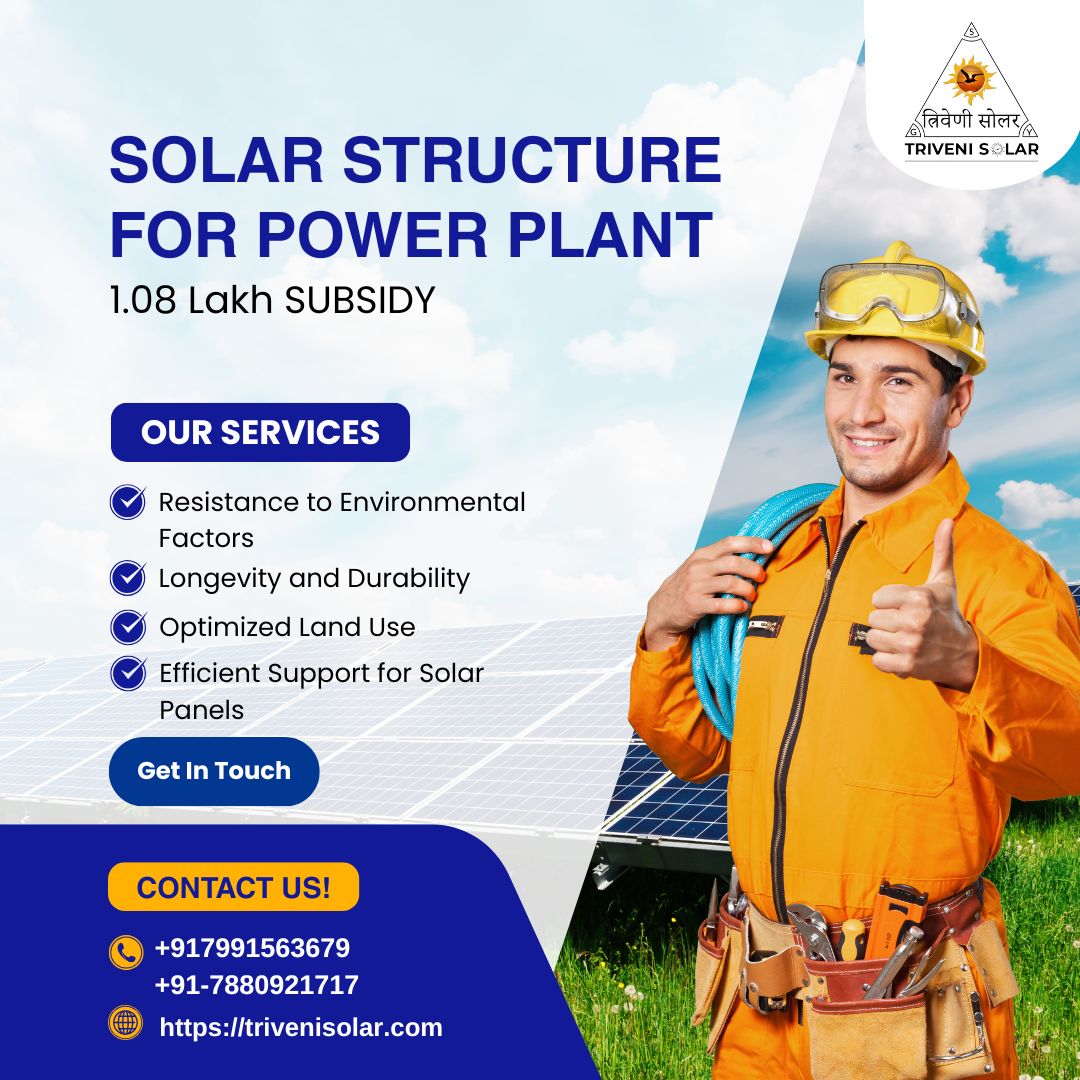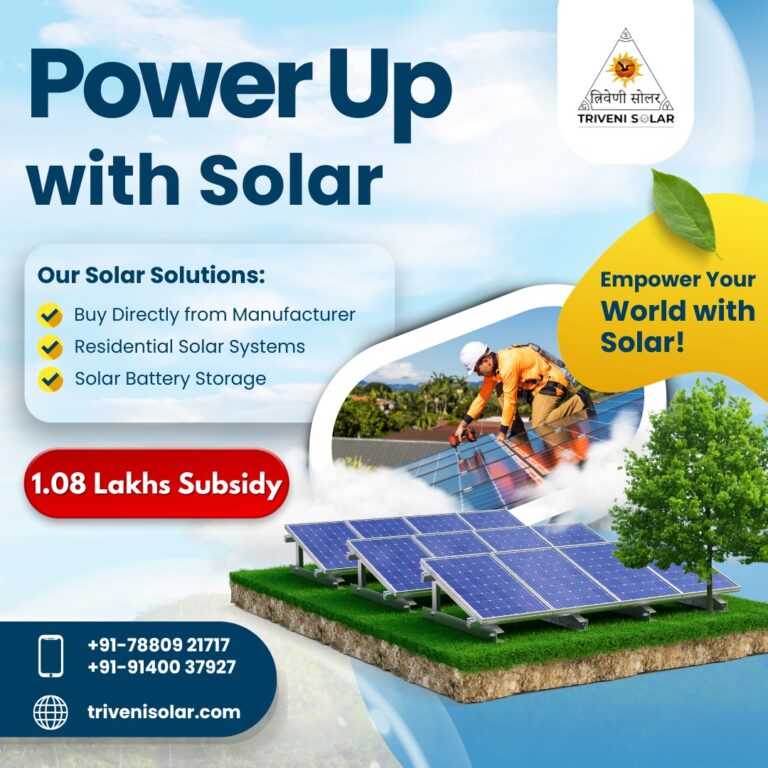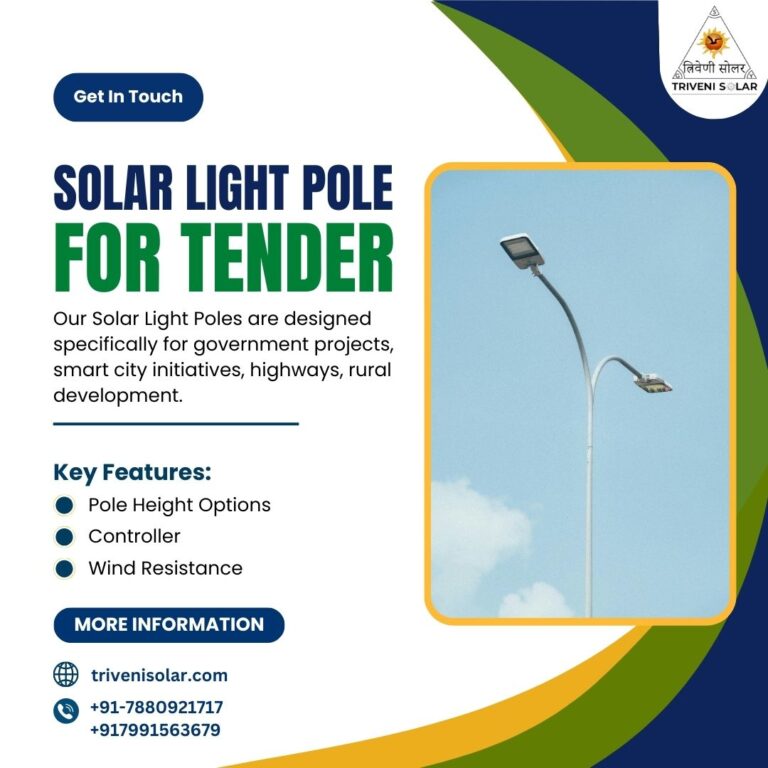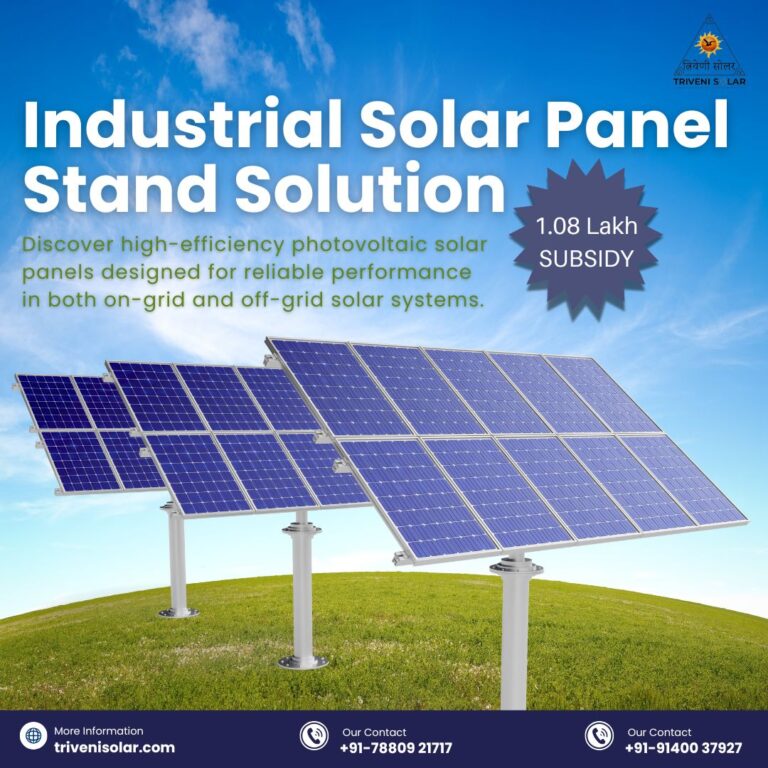Solar structure for power plants are essential for supporting photovoltaic panels, ensuring optimal orientation, and withstanding environmental factors. In India, selecting the appropriate mounting system—be it fixed, tracking, or pole-mounted—is crucial for maximizing energy output and adhering to local regulations.
Table of Contents
- Understanding Solar Mounting Systems
- Types of Solar Mounting Structures
- Material Selection for Durability and Efficiency
- Design Considerations for Indian Climates
- Compliance with Indian Standards and Regulations
- Cost Analysis and Return on Investment
- Maintenance and Longevity of Solar Structures
- Conclusion
- FAQ
Understanding Solar Structure
Solar mounting systems form the backbone of any photovoltaic power plant. They ensure that solar panels are securely installed at the optimal angle to maximize sunlight capture. A robust mounting system enhances energy efficiency, minimizes maintenance, and ensures longevity.
At Triveni Solar, we emphasize selecting mounting structures that meet the specific environmental and operational conditions of each power plant.
Types of Solar Structure
Fixed Systems
Fixed solar structures are the simplest and most cost-effective. They keep solar panels at a predetermined tilt angle. Ideal for regions with consistent sun paths, fixed systems require minimal maintenance and are easier to install.
Tracking Systems
Tracking systems follow the sun’s path throughout the day, maximizing energy generation. While they have a higher initial cost, the increase in energy yield can justify the investment, especially for large-scale power plants.
Pole-Mounted Systems
Pole-mounted solar structures elevate panels on poles, often used in uneven terrains or areas prone to flooding. They offer flexibility in installation and can be adjusted for seasonal sun variations.
Comparison of Solar Structure
| Type | Initial Cost | Maintenance | Energy Yield | Best For |
|---|---|---|---|---|
| Fixed | Low | Low | Moderate | Flat terrains, consistent sunlight |
| Tracking | High | Moderate | High | Utility-scale plants, variable sunlight |
| Pole-Mounted | Medium | Medium | Moderate | Uneven or flood-prone terrains |
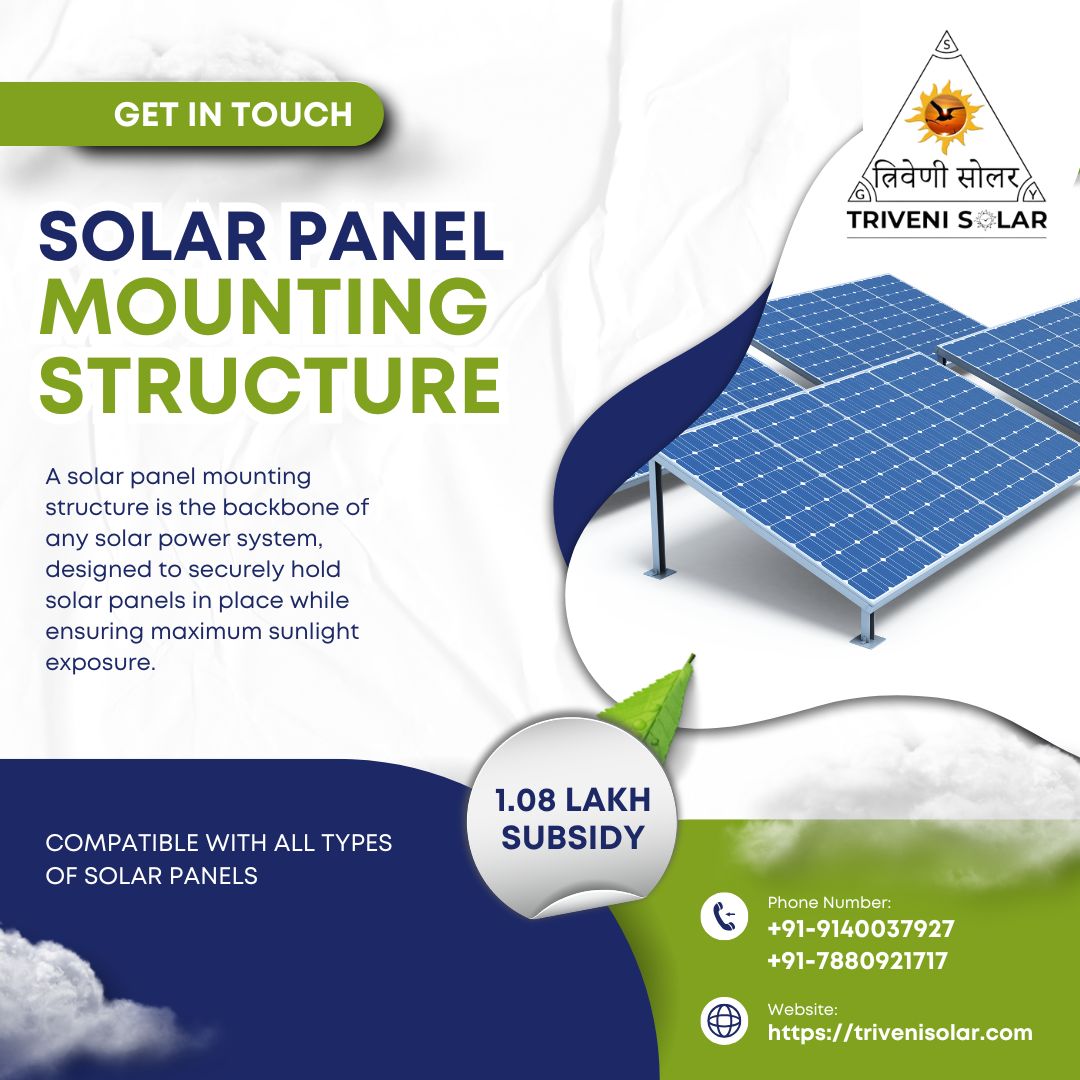
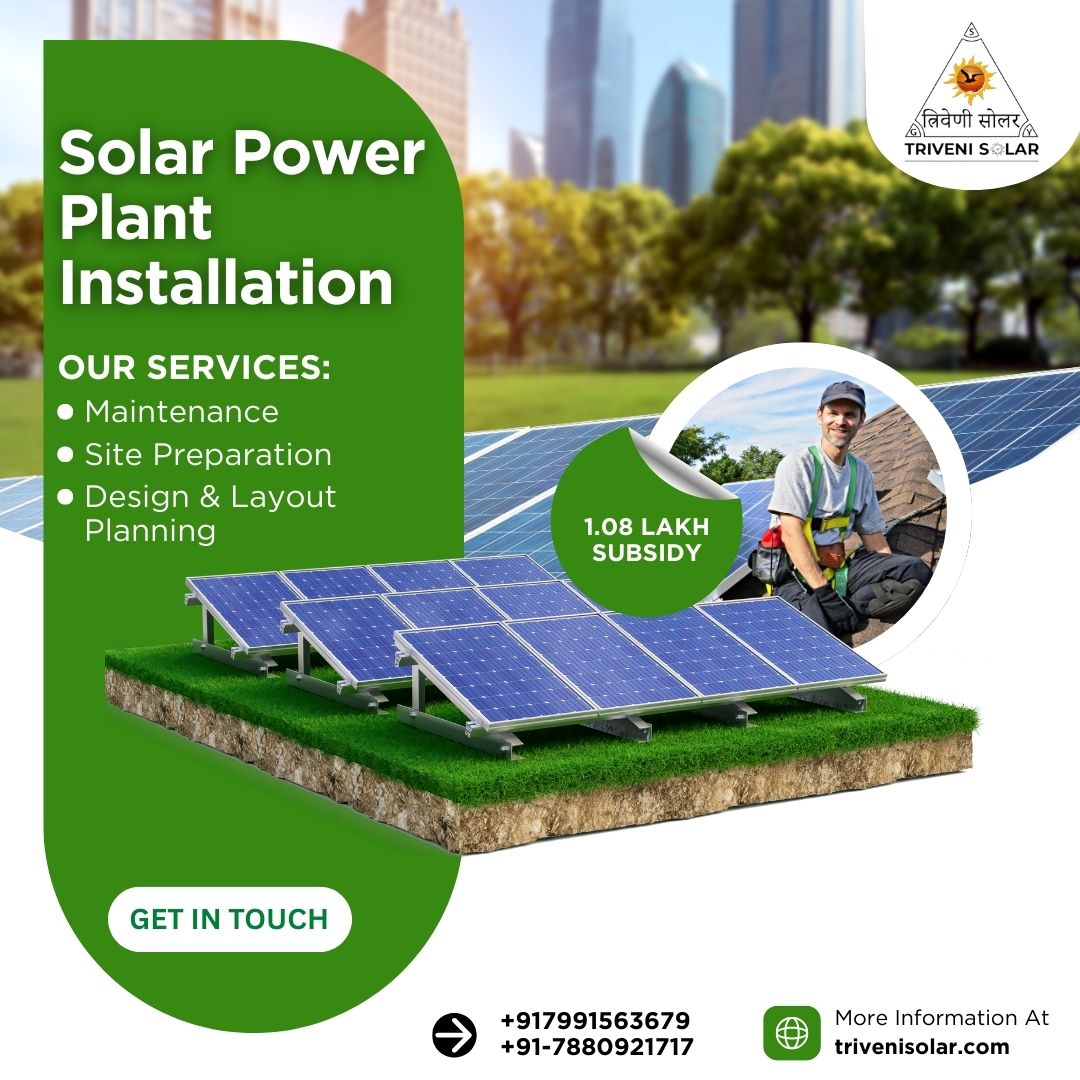
Solar Structure Material Selection for Durability and Efficiency
The right material ensures longevity, structural stability, and resistance to environmental factors such as wind, rain, and UV exposure.
Steel vs. Aluminum
- Steel: Strong, cost-effective, and ideal for heavy-duty installations. Needs proper anti-corrosion coating.
- Aluminum: Lightweight, corrosion-resistant, and easier to transport and install. Slightly higher cost.
Corrosion Resistance
In India’s diverse climates, corrosion-resistant coatings are critical. Hot-dip galvanization, powder coating, or anodized finishes help maintain structural integrity over decades.
Cost Considerations
Balancing initial investment and long-term maintenance is key. Steel structures are cheaper initially but may require more upkeep, whereas aluminum may offer lower lifetime costs.
Design Considerations for Indian Climates
Indian climates vary from coastal humidity to desert aridity. Designing solar structures requires careful evaluation of environmental loads.
Wind Loads
Structures must withstand high wind speeds, especially in cyclone-prone areas. Design calculations are essential to prevent panel detachment or structural failure.
Seismic Activity
Regions like the Himalayas or Northeast India require earthquake-resistant mounting systems. Structural reinforcement ensures safety and continuity of operations.
Temperature Variations
Materials expand and contract with temperature changes. Proper allowances in design prevent stress fractures and misalignment.
Compliance with Indian Standards and Regulations
Adhering to Indian standards ensures safety, longevity, and legal compliance.
BIS and PWD Standards
The Bureau of Indian Standards (BIS) provides guidelines for solar mounting structures, while PWD regulations govern large-scale installations. Compliance minimizes risk and facilitates approvals.
Environmental Regulations
Environmental clearance ensures that installation does not harm local ecosystems. Proper site assessment and structure selection can simplify approvals.
Solar Structure Cost Analysis and Return on Investment
Initial Investment
The initial cost varies with system type, material, and site conditions. Tracking systems cost more upfront but increase energy generation.
Maintenance Costs
Regular inspections, cleaning, and minor repairs ensure long-term performance. Choosing durable materials reduces maintenance expenses.
Payback Period
Optimized structures can shorten payback periods by maximizing energy yield and reducing downtime.
Estimated Costs for Solar Structures (India)
| Structure Type | Material | Cost Range (INR/sq.m) | Expected Lifespan (Years) |
|---|---|---|---|
| Fixed | Steel | 1,200 – 1,800 | 20–25 |
| Tracking | Steel/Aluminum | 2,500 – 3,500 | 20–25 |
| Pole-Mounted | Steel | 1,500 – 2,200 | 20–25 |
Maintenance and Longevity of Solar Structure
Long-lasting structures reduce operational costs and prevent energy loss.
Routine Inspections
- Check bolts, joints, and supports for corrosion or loosening.
- Inspect panel alignment and tilt for optimal efficiency.
Structural Reinforcements
Reinforce joints and anchor points in cyclone or high-wind areas to ensure stability.
Warranty Considerations
Choose structures with manufacturer warranties covering corrosion and structural failure.
Conclusion
Investing in the right solar structure for a power plant is crucial for efficiency, safety, and long-term returns. Triveni Solar offers customized solutions for Indian climates, ensuring compliance, durability, and high energy yield. Contact us today for expert guidance and project consultation.

